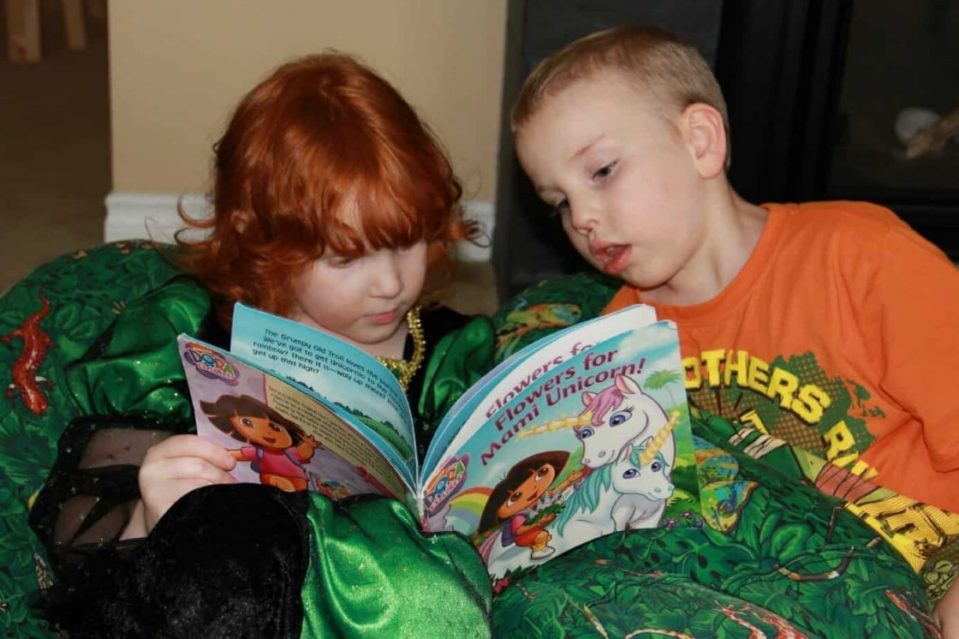

Choosing to homeschool your child is a big decision, even more so when you have a child with any kind of additional needs. Two of our children are on the autism spectrum and both of those have been in regular school and have been homeschooled.
Our eldest son graduated with extra credits to spare, once we withdrew him from high school and completed his education at home, while our youngest is thriving at home and learning at a pace which is comfortable for him.
I’d like to share a few helpful nuggets of advice that might make your journey a little easier from the start.
1. Take Time Off
Many people homeschool their child with autism because they’ve tried the school system and it hasn’t been successful for them. You and your child may have built up negative associations with learning and just taking a week or two off to enjoy the change can do you both wonders. Go for walks, visit favorite places, paint, make music and read – whatever your child enjoys doing. These experiences lay the foundation for learning together at home.
2. Don’t Rush Into Buying Curriculum
Now that you’ve made the decision to homeschool, don’t make the mistakes we made. I immediately had timetables written up, materials purchased and tried to make our homeschool just like traditional school.
Big mistake.
Many of the resources are still unused because I bought them before discovering what worked best for us. Give yourself time to see what works, read about autism and learning, then set up your plans.
3. Let Your Child Lead You


Read your child’s mood and adapt learning and teaching based on what s/he needs. You know your child best, and if something worked on Monday but doesn’t work on Tuesday, it’s okay.
4. Work Where Your Child Learns Best
We spend time working at the table, but plenty of time working while rolling on the floor, in the garden (rain or shine) or out and about – in the woods, recreation center and at community events. My son Gabriel learns best when he’s involved in hands-on, active learning and through homeschooling, we can accommodate to his style. However, my older son James works best at a desk in his room, with his headphones on and with no distractions. Thankfully, homeschooling gives us this wonderful flexibility.
5. Work When Your Child Learns Best
Our eldest son, James, works best with a strict schedule. He feels more secure knowing exactly what he has to do and when he has to do it. He likes getting up early and starting work right away. He pauses for breakfast, then resumes work until he has achieved his planned tasks. Then, we sit together, discuss any items he needs help with and plan the next day. The rest of the day is filled with activities of his choosing. Our youngest son, Gabriel, responds best to flexibility in his schedule. He likes to sleep late, eat, and then move onto learning through a ‘little & often’ approach.
6. Focus On What Your Child Enjoys
Autism or no autism, nothing is as miserable as trying to force your child to work through a learning experience they don’t enjoy. Sometimes this is unavoidable but when homeschooling, you can alter things to suit you both.
For example, Gabriel does not like to write. Letter practice is difficult as is writing words in repetitive form. He does, however, enjoy working on the iPad – especially when there are sounds involved – so we practice letter and word writing in an app that plays music as he shapes the letters.
7. Learn By Theme Instead of Subject


With Gabriel we rarely do math, art or language and instead we learn about space, the ocean or his current obsession. We incorporate most of the traditional subjects into these themes without him aware. In fact, for the past few weeks, we have spent most of out time in the kitchen learning science, math and language by cooking and playing with food.
8. Work With Your Therapy
We work therapy into our school day and mix traveling to appointments with trips to the woods or other activities Gabriel enjoys. We can easily integrate therapy into our day by taking sensory therapy breaks, practicing speech when learning about our themes and generally making our entire day as “autism friendly” as possible.
9. Socialize How You Want
The biggest criticism of homeschooling is that children don’t get the opportunity to socialize and that socialization is especially important for kids with autism.
We have the opposite opinion – if your kids hate socializing, don’t do it. Our little ones have plenty of opportunities to socialize in the wider community. They attend “after school” activities like other children do, and are just as comfortable as their fellow participants.








